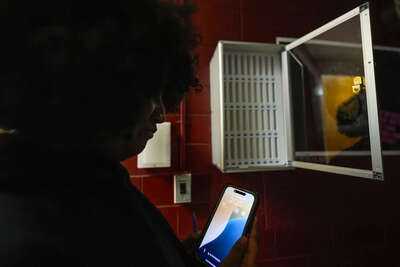Phones down, focus up: How cellphone bans are proving beneficial in US classrooms
Across the United States, K-12 schools are rethinking the role of cellphones in classrooms. As technology reshapes the way students learn, educators are grappling with the unintended consequences of constant screen access — distraction, disengagement, and even emotional strain. In response, a growing number of schools are imposing restrictions, seeking a balance between connectivity and focus.

Principals see results
Three nationally representative surveys released this month highlight a clear pattern: cellphone restrictions are broadly supported by school leaders and teachers. According to research from Rand, 86% of principals in schools with such policies reported improvements in school climate, reduced cyberbullying, and a decline in inappropriate cellphone use. Six in 10 students agreed that restrictions during class reduced distractions, though only one in 10 supported a “bell-to-bell” limit.
A second study, part of the Phones in Focus project supported by the National Governors Association, found that strict schoolwide rules on when and where students can use phones correlated with lower phone use in class and higher teacher satisfaction.
Policy tightening nationwide
Cellphone restrictions are no longer isolated experiments. At least 26 states have enacted laws or policies requiring local school boards to limit or ban phone use in K-12 classrooms, with 22 of these adopted in 2025 alone, according to Ballotpedia. Research points to tangible benefits: schools enforcing stricter rules report that students remain focused longer, even when devices are stored in backpacks or pockets rather than taken away entirely.
High-poverty schools are more likely to adopt full bans, according to a study published in JAMA Health Forum . In contrast, restrictions tend to be less severe in high schools, where older students are afforded more independence.
Parental concerns and adaptations
While educators praise the benefits, cellphone bans have met some resistance. A 2005 survey from the National Parents Union indicated that over three-quarters of parents want children to have access to phones during the school day for emergencies. Some states have sought middle ground.
New York’s policy, for example, prohibits internet-enabled devices, including phones and laptops, on school grounds during the day beginning in 2025-26. Districts retain flexibility to create plans tailored to their schools. In New York City Public Schools, the nation’s largest district with a ban, students must store devices, but exceptions exist for medical needs, translation services, emergencies, and Individualized Education Programs.
Beyond school walls, the public is increasingly aligned with these measures. Pew Research Center data released this summer found that nearly three-quarters of US adults support cellphone restrictions for middle and high school students.
A classroom transformed
The evidence suggests that schools are finding balance in a digital age. Teachers report higher satisfaction, students stay engaged longer, and overall learning conditions improve. The message is clear: managing cellphone use is not about eliminating technology but reclaiming focus. For a generation growing up immersed in screens, disciplined boundaries may be the key to learning effectively.
Principals see results
Three nationally representative surveys released this month highlight a clear pattern: cellphone restrictions are broadly supported by school leaders and teachers. According to research from Rand, 86% of principals in schools with such policies reported improvements in school climate, reduced cyberbullying, and a decline in inappropriate cellphone use. Six in 10 students agreed that restrictions during class reduced distractions, though only one in 10 supported a “bell-to-bell” limit.
A second study, part of the Phones in Focus project supported by the National Governors Association, found that strict schoolwide rules on when and where students can use phones correlated with lower phone use in class and higher teacher satisfaction.
Policy tightening nationwide
Cellphone restrictions are no longer isolated experiments. At least 26 states have enacted laws or policies requiring local school boards to limit or ban phone use in K-12 classrooms, with 22 of these adopted in 2025 alone, according to Ballotpedia
High-poverty schools are more likely to adopt full bans, according to a study published in JAMA Health Forum . In contrast, restrictions tend to be less severe in high schools, where older students are afforded more independence.
Parental concerns and adaptations
While educators praise the benefits, cellphone bans have met some resistance. A 2005 survey from the National Parents Union indicated that over three-quarters of parents want children to have access to phones during the school day for emergencies. Some states have sought middle ground.
New York’s policy, for example, prohibits internet-enabled devices, including phones and laptops, on school grounds during the day beginning in 2025-26. Districts retain flexibility to create plans tailored to their schools. In New York City Public Schools, the nation’s largest district with a ban, students must store devices, but exceptions exist for medical needs, translation services, emergencies, and Individualized Education Programs.
Beyond school walls, the public is increasingly aligned with these measures. Pew Research Center data released this summer found that nearly three-quarters of US adults support cellphone restrictions for middle and high school students.
A classroom transformed
The evidence suggests that schools are finding balance in a digital age. Teachers report higher satisfaction, students stay engaged longer, and overall learning conditions improve. The message is clear: managing cellphone use is not about eliminating technology but reclaiming focus. For a generation growing up immersed in screens, disciplined boundaries may be the key to learning effectively.
Next Story